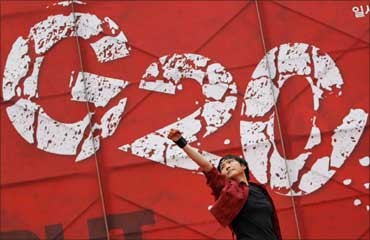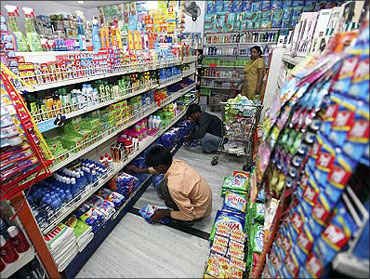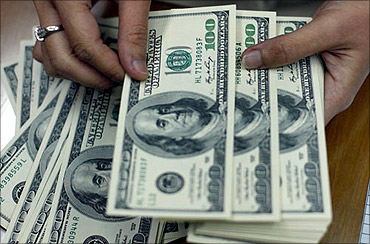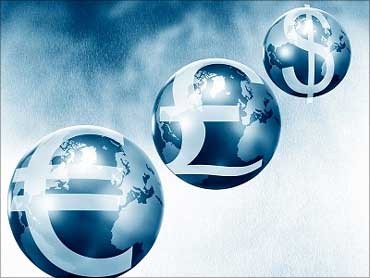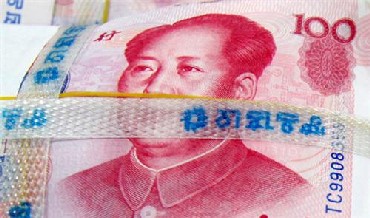China has the key to restore global imbalances
Last updated on: May 2, 2011 17:20 IST
The various Gs (different groups of member countries) met in Washington in mid-April as part of the Fund Bank spring meetings.
India is a member of the Monetary and Financial Committee of the IMF, the G24 grouping of the most important developing countries, and G20, the group of largest economies that has become active, including at the heads of government level, since the financial crisis of 2008.
The G24 did not agree with the proposed IMF framework for staff advice to member countries on managing capital flows and its inclusion in fund surveillance.
Click NEXT to read on
China has the key to restore global imbalances
Last updated on: May 2, 2011 17:20 IST
In contrast, the Monetary and Financial Committee praised the IMF's recent work on managing capital inflows as "a step that should lead toward a comprehensive and balanced approach for the management of capital flows drawing on country experiences."
It seems rather strange that India agrees with both statements!
The G20 finance ministers also agreed on "Indicative guidelines for assessing persistently large imbalances".
Click NEXT to read on
China has the key to restore global imbalances
Last updated on: May 2, 2011 17:20 IST
The chosen indicators are "(i) public debt and fiscal debt deficits; and private savings rate and private debt (ii) and the external imbalance composed of the trade balance and net investment income flows and transfers, whilst taking due consideration of exchange rate, fiscal, monetary and other policies."
Why India agreed to the inclusion of transfers in this, given our huge remittance inflows, is difficult to understand.
In my view, these are more like capital inflows, albeit of an irreversible nature, and are no indicator of the domestic economy.
China has the key to restore global imbalances
Last updated on: May 2, 2011 17:20 IST
Also, one assumes that the expression trade balance includes trade in both goods and services.
These indicators are to be monitored by the IMF using "statistical approaches" in comparison with the 1990 to 2004 period.
And, "countries identified by at least two of the four approaches as having persistently large imbalances will be assessed in-depth to determine in a second step the nature and root causes of their imbalances and to identify impediments to adjustment."
Click NEXT to read on
China has the key to restore global imbalances
Last updated on: May 2, 2011 17:20 IST
Why the IMF is needed to undertake the statistical analysis is something of a mystery. Surely, anyone with a spreadsheet and the data of national accounts would be able to make the calculations in a few days?
One wonders whether the whole approach to this "indicators" was to arrive at variables with which the Big 2 - the US and China - are comfortable.
Incidentally, the G20 also agreed on the criteria for the countries to be monitored by the IMF: those with a GDP, either in nominal exchange rate or PPP terms, more than five per cent of the corresponding G20 aggregate.
Click NEXT to read on
China has the key to restore global imbalances
Last updated on: May 2, 2011 17:20 IST
India is one of this seven and qualifies under the alternative criterion, namely GDP at PPP terms. A new G7?
What will help cure global imbalances is of course China's, perhaps belated, recognition that building up further USD assets in the form of treasuries could lead to a major loss on the value of its savings. It seems to have clearly recognised this risk and taken various steps recently:
Click NEXT to read on
China has the key to restore global imbalances
Last updated on: May 2, 2011 17:20 IST
Knowing well that the effect of its trying to diversify existing reserves into other currencies would only hasten the possibility of a sharp fall of the dollar, China has recently transferred another $200 bn from its reserves to its sovereign wealth fund. Presumably, this would be invested in riskier but hopefully higher rewarding assets, and not in the US treasuries. One should expect that, one way or another, China would stop adding to its stock of the US treasuries. This of course has serious implications for the external value of the dollar, and the USD yield curve which, even otherwise, is likely to start steepening as the QEII purchase of treasuries by the Federal Reserve, comes to an end. Click NEXT to read on
China has the key to restore global imbalances
Last updated on: May 2, 2011 17:20 IST
While China has stubbornly resisted pressures to appreciate its currency faster in nominal terms, it is simultaneously making sure that the currency appreciates in real terms through both domestic inflation and sharp hikes in manufacturing wages. The result is perhaps already seen in the fact that the country registered a trade deficit in Q1 of 2011, for the first time since 2004. Click NEXT to read on
China has the key to restore global imbalances
Last updated on: May 2, 2011 17:20 IST
But coming back to India, I expect to come back to the following two comments in the Governor's intervention in the Monetary and Financial Committee of the IMF:
Global rebalancing will require deficit economies to save more and consume less, while depending more on external demand relative to domestic demand for sustaining growth. That currency interventions should not be resorted to as an instrument of trade policy should be central to a coordinated approach at a multilateral level.
Source:


